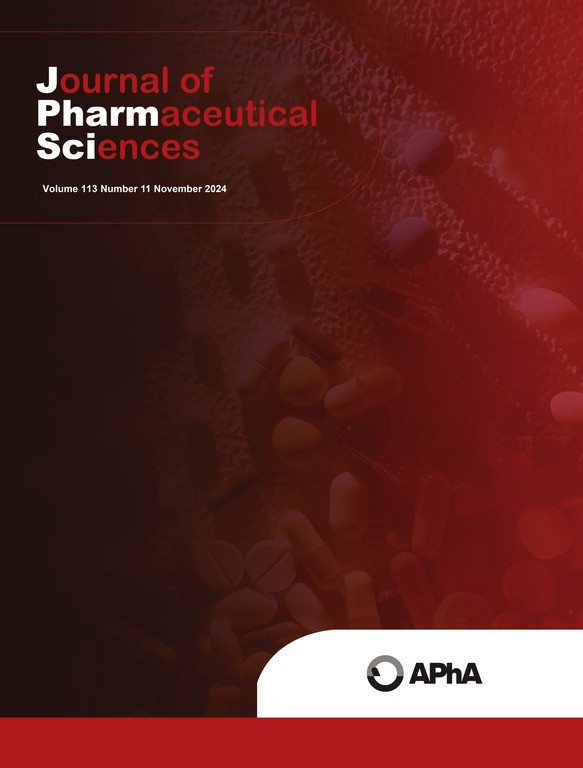Intranasal delivery of temozolomide and desloratadine for brain tumour therapy: A cellular study on nasal epithelial toxicity, transport, and permeability
IF 3.7
3区 医学
Q2 CHEMISTRY, MEDICINAL
引用次数: 0
Abstract
Background
The treatment of brain tumours, particularly glioblastoma (GBM), remains a significant challenge due to limited therapeutic options and the restrictive nature of the blood-brain barrier (BBB), which contributes to inadequate effective drug delivery. Temozolomide (TMZ), the first-line chemotherapeutic agent for GBM, offers only a modest survival benefit of 14.6 months and is associated with significant systemic side effects. Intranasal drug delivery has emerged as a promising non-invasive alternative, offering direct nose-to-brain (N2B) pathways to bypass the BBB. This method enables rapid and targeted drug transport while minimising systemic toxicity.
Methods
This study investigates the potential of desloratadine (DL), a repurposed non-sedating second-generation antihistamine, to enhance the therapeutic profile of TMZ in a nasal epithelial barrier model, representing the initial point of contact for N2B drug delivery. Cellular studies were conducted to evaluate the cytotoxicity, half-maximal inhibitory concentration, combination index, epithelial integrity, and drug transport properties of TMZ and DL alone and in combination. Transepithelial electrical resistance (TEER) and permeability coefficient (Papp) assays assessed barrier integrity and drug transport across the nasal epithelial cells, while cytotoxicity studies confirmed selective targeting of nasal cells during intranasal administration without affecting bronchial cell viability.
Results
DL demonstrated significant intracellular retention in nasal epithelial cells, while TMZ exhibited efficient transport across the nasal barrier with moderate cellular retention. The combination of TMZ and DL reduced cytotoxicity in nasal epithelial cells compared to TMZ alone, suggesting DL’s protective role in mitigating TMZ-induced cytotoxic effects. TEER and Papp analyses confirmed that both agents preserved nasal epithelial integrity, supporting their compatibility with N2B delivery. The synergistic effects of the combination therapy indicate an enhanced therapeutic profile for TMZ, with reduced off-target toxicity.
Conclusion
This study highlights the potential of a TMZ-DL drug combination therapy as a novel delivery strategy for brain tumour treatment. DL not only mitigates TMZ-induced cytotoxicity but also preserves the structural and functional integrity of the nasal epithelial barrier, addressing a critical translational gap in non-invasive drug delivery for brain tumours. Future work should focus on optimising dosing regimens and validating these findings in advanced 3D nasal models to facilitate clinical translation of this innovative therapeutic approach.
替莫唑胺和地氯雷他定鼻内给药用于脑肿瘤治疗:一项关于鼻上皮毒性、转运和通透性的细胞研究
脑肿瘤,特别是胶质母细胞瘤(GBM)的治疗仍然是一个重大挑战,因为有限的治疗选择和血脑屏障(BBB)的限制性,这导致了有效的药物递送不足。替莫唑胺(TMZ)是GBM的一线化疗药物,仅提供14.6个月的适度生存期,并伴有明显的全身副作用。鼻内给药已成为一种有前途的非侵入性替代方案,提供直接的鼻到脑(N2B)途径绕过血脑屏障。这种方法能够快速和有针对性地转运药物,同时最大限度地减少全身毒性。方法本研究探讨了地氯雷他定(DL)的潜力,这是一种非镇静性的第二代抗组胺药,在鼻上皮屏障模型中增强TMZ的治疗效果,鼻上皮屏障是N2B药物传递的初始接触点。通过细胞研究来评估TMZ和DL单独或联合使用的细胞毒性、半最大抑制浓度、联合指数、上皮完整性和药物转运特性。经上皮电阻(TEER)和渗透性系数(Papp)测定评估了屏障完整性和药物通过鼻上皮细胞的运输,而细胞毒性研究证实了鼻内给药过程中鼻细胞的选择性靶向性,而不影响支气管细胞的活力。结果dl在鼻上皮细胞中表现出明显的细胞内滞留,而TMZ在鼻屏障中表现出有效的运输,并有适度的细胞滞留。与单独使用TMZ相比,TMZ和DL联合使用可降低鼻上皮细胞的细胞毒性,提示DL在减轻TMZ诱导的细胞毒性作用中具有保护作用。TEER和Papp分析证实,这两种药物都保持了鼻上皮的完整性,支持它们与N2B递送的兼容性。联合治疗的协同作用表明TMZ的治疗效果增强,脱靶毒性降低。结论本研究强调了TMZ-DL联合治疗作为脑肿瘤治疗的一种新的给药策略的潜力。DL不仅减轻了tmz诱导的细胞毒性,而且还保持了鼻上皮屏障的结构和功能完整性,解决了脑肿瘤非侵入性药物递送的关键翻译空白。未来的工作应侧重于优化给药方案,并在先进的3D鼻腔模型中验证这些发现,以促进这种创新治疗方法的临床转化。
本文章由计算机程序翻译,如有差异,请以英文原文为准。
求助全文
约1分钟内获得全文
求助全文
来源期刊
CiteScore
7.30
自引率
13.20%
发文量
367
审稿时长
33 days
期刊介绍:
The Journal of Pharmaceutical Sciences will publish original research papers, original research notes, invited topical reviews (including Minireviews), and editorial commentary and news. The area of focus shall be concepts in basic pharmaceutical science and such topics as chemical processing of pharmaceuticals, including crystallization, lyophilization, chemical stability of drugs, pharmacokinetics, biopharmaceutics, pharmacodynamics, pro-drug developments, metabolic disposition of bioactive agents, dosage form design, protein-peptide chemistry and biotechnology specifically as these relate to pharmaceutical technology, and targeted drug delivery.

 求助内容:
求助内容: 应助结果提醒方式:
应助结果提醒方式:


